The jungle cat is a medium-sized wild cat that can be found in Asia and the Middle East. They inhabit marshas, grasslands and scrublands.
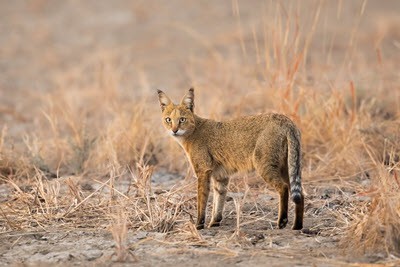
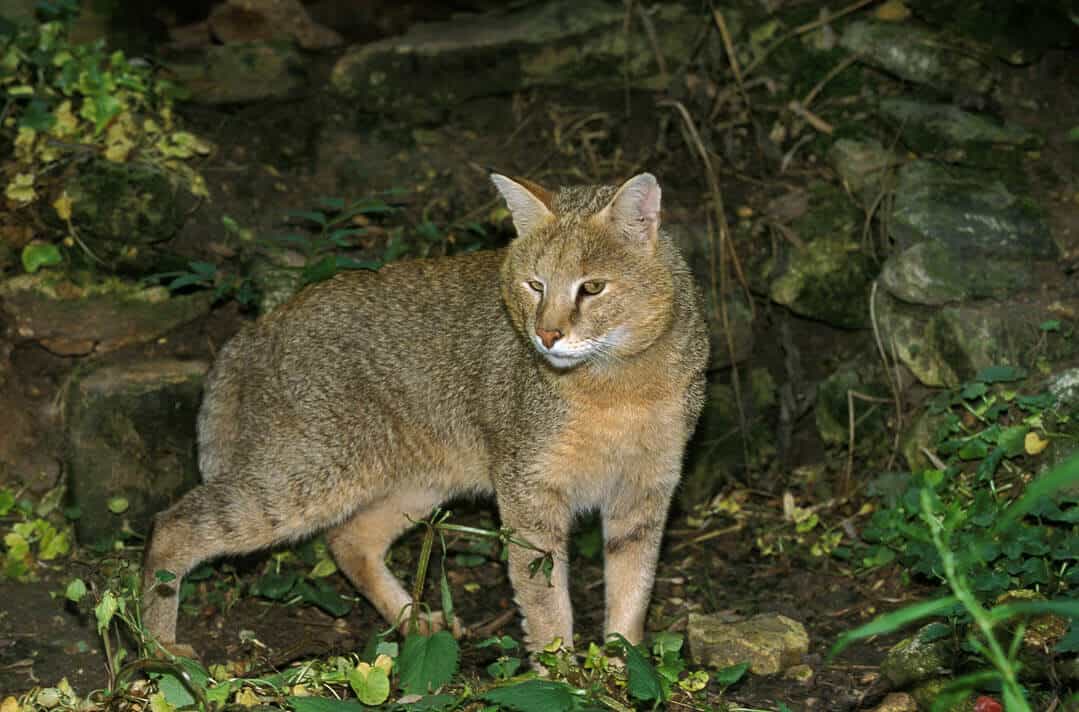
Scientific name: Felis chaus
Conservation status: Least Concern
Although generally considered Least Concern, on the IUCN Red List, it is Near Threatened in Bangladesh and Sri Lanka and Endangered in China.
Subspecies:
- Felis chaus chaus (Central Asia, Africa, the Middle East, Caucasus)
- F. chaus affinis (South Asia)
- Felis chaus fulvidina (Southeast Asia)
Lineage – The jungle cat belongs to the Domestic Cat lineage, which includes the African wildcat, black-footed cat, sand cat, Chinese mountain cat, European wildcat and domestic cat.
Interesting Jungle Cat Facts
- Mostly found in wetlands
- They can swim up to a mile and dive into the water to hunt fish
- They are also competent climbers
- Like the domestic cat, jungle cats were mummified in ancient Egypt and put in tombs.
- Jungle cats have been recorded running up to 20 miles per hour.
More about the Jungle Cat
The jungle cat (Felis chaus) is a medium-sized wild cat that inhabits central and southern Asia, southern China, India, Sri Lanka, and the Middle East. It is also known as the swamp cat and reed cat.
Jungle cats are generally found at elevations below 3500 feet but have also been seen at much higher elevations in the Himalayan mountains.
Physical characteristics
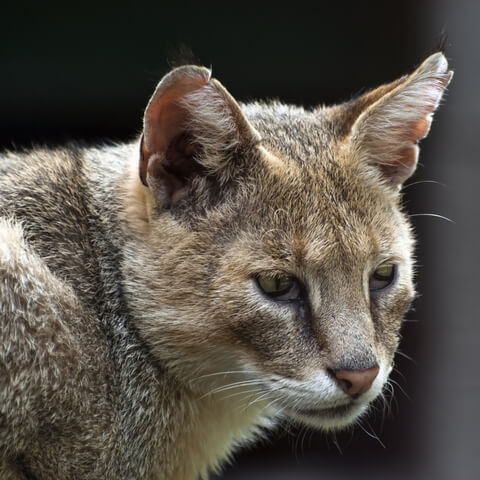 Jungle cats are the largest of the Felis species. Their head/body length is between 23 and 30 inches. The size of the jungle cat decreases based on its location from west to east. They are nearly 14 inches tall with long legs, a narrow, round face, a white muzzle, and yellow eyes.
Jungle cats are the largest of the Felis species. Their head/body length is between 23 and 30 inches. The size of the jungle cat decreases based on its location from west to east. They are nearly 14 inches tall with long legs, a narrow, round face, a white muzzle, and yellow eyes.
The cat’s fur has a uniform mixture of sand, grey, and brown colors.
White lines are around the eyes, and dark lines are down the side of the nose.
| Jungle Cat | From | To |
| Head and body | 23 inches | 30 inches |
| Height at shoulder | 14 inches | |
| Weight | 4.4 lbs. | 35.3 lbs. |
| Ears | 1.8 inches | 3.1 inches |
Sounds
Purring, meowing, chirping, growling, hissing, barking and gurgling.
Location and habitat
Jungle cats live solitary lives except during the mating season and when a female cat raises her kittens. They inhabit places with water and dense vegetation, such as swamps and other wetlands. They have also been found in forests, savannahs, shrublands, grasslands, and deserts. They have also adapted to cultivated landscapes (e.g., places where crops are grown), tree farms, and man-made wetlands.
In parts of Central Asia, there are an estimated 40 to 150 jungle cats per 62 square miles.
Jungle cats often use the abandoned burrows of other small mammals like badgers and foxes as dens.
Hunting and prey (diet)
Jungle cats hunt all day long, usually around riverbanks and reed beds. They are also active in the evening. They maintain their territories by spraying urine and scent marking.
In India, they are most active at night; in Cambodia, they are more active during the day.
They stalk their prey and then attack with a leap or sprint. Jungle cats can jump high in the air to catch birds.
The cats primarily eat small mammals like hares, rodents, and gerbils but also hunt fish, frogs, birds, small snakes, squirrels, insects, the eggs of birds, and sometimes pigs and gazelles. A jungle cat is mainly a carnivore but will also eat olives and other types of small fruit. According to one study, a jungle cat will catch between 3 and 5 rodents per day.
Jungle cats living near villages will prey on domestic animals like ducks, chickens, and geese.
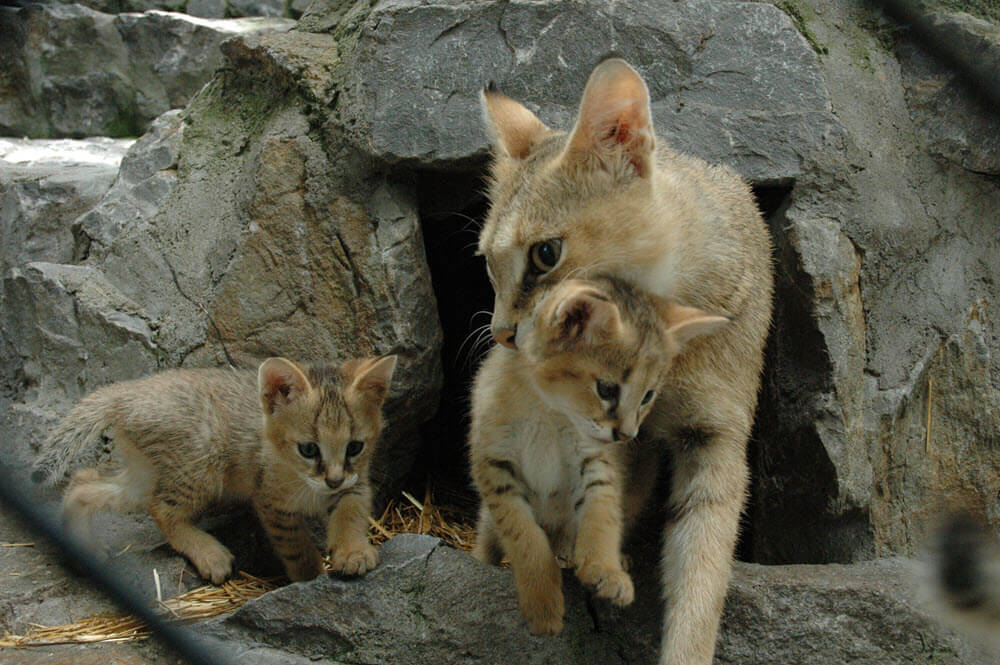
Reproduction and life span
Jungle cats are solitary animals that only socialize with other members of their species during mating season. Occasional groups of male and female jungle cats with their kittens have been spotted together in the wild.
After mating, the male and female jungle cat will separate. Gestation is approximately two months.
Kittens are generally born between December and June, but the time can vary depending on location. There are one to five kittens in a litter. On average, a female jungle cat will have two litters a year.
Kittens will open their eyes at around 10 to 13 days of age. They will start catching prey around six months of age and leave their mother when they are around eight to nine months old. Jungle cats can live up to 20 years in captivity; how long they live in the wild has been estimated at 9 – 10 years.
| Behavior | Males and females have multiple mates throughout their lives. | Offspring becomes independent | 8 – 9 months |
| Mating season | December – June | January – March | Offspring can reproduce | 11 – 18 months |
| Pregnancy duration | 63 – 66 days | Adult female name | queen |
| Number of litters per year | 1 – 2 | Adult male name | tomcat |
| Litter size | 2 – 4 kittens | Newly born name | kitten |
| Offspring start hunting | 6 months |
Jungle Cat Conservation Issues
Jungle cats are considered Least Concern by the IUCN. However, their populations are declining.
Key conservation issues for the jungle cat are:
- Habitat loss – the destruction of wetlands, which most jungle cats depend on for their survival.
- Hunting – jungle cats are hunted for their skin. In India, they are also part of the diet of local tribesmen, where it is considered a delicacy.
- Illegal wildlife trade
- Human conflict – retaliatory killings by farmers
- Poisoning
- Dam construction and irrigation projects.
- Pollution
- Industrialization and urbanization
- Expanding agriculture
- Traffic accidents and feral dogs
The jungle cat is protected over some of its range. It is illegal to hunt jungle cats in Afghanistan, Bangladesh, India, China, Iran, Israel, Myanmar, Pakistan, Tajikistan, Thailand and Turkey.
The jungle cat is not legally protected outside of protected areas in Georgia, Bhutan, Lao PDR, Lebanon, Nepal, Sri Lanka and Vietnam
In many areas where the jungle cat is legally protected, it is still routinely killed.
Jungle Cat Research Quotes
- Small cats in big trouble? Diet, activity, and habitat use of jungle cats and leopard cats in threatened dry deciduous forests, Cambodia |Rostro-García, Minge, et al. “Our study confirmed that jungle cats are DDF specialists that likely persist in low numbers due to the harsh conditions of the dry season in this habitat, including annual fires and substantial decreases in small vertebrate prey.”
- 2020 Jungle cat Population Density Esimates, Activity Pattern and Spatiotermporal Interactions with Humans and other Wildlife Species in Turkey | Unal, Eryilmaz, et al. “..there are many threats endangering the population of the jungle cat in Turkey…it was concluded that human activity affects wildlife behavior and that wild animals are haivng to adjust their living and feeding behaviors according to human activity.”
- “Jungle cats have both positive and negative impacts on the lives of the farmers. They kill rodents and reduce the amount of crops destroyed by the rodents.” – Jungle cats-are they beneficial or harmful to the farmers of rural West Bengal?
(Updated 2021) T. Choudhury, et al.

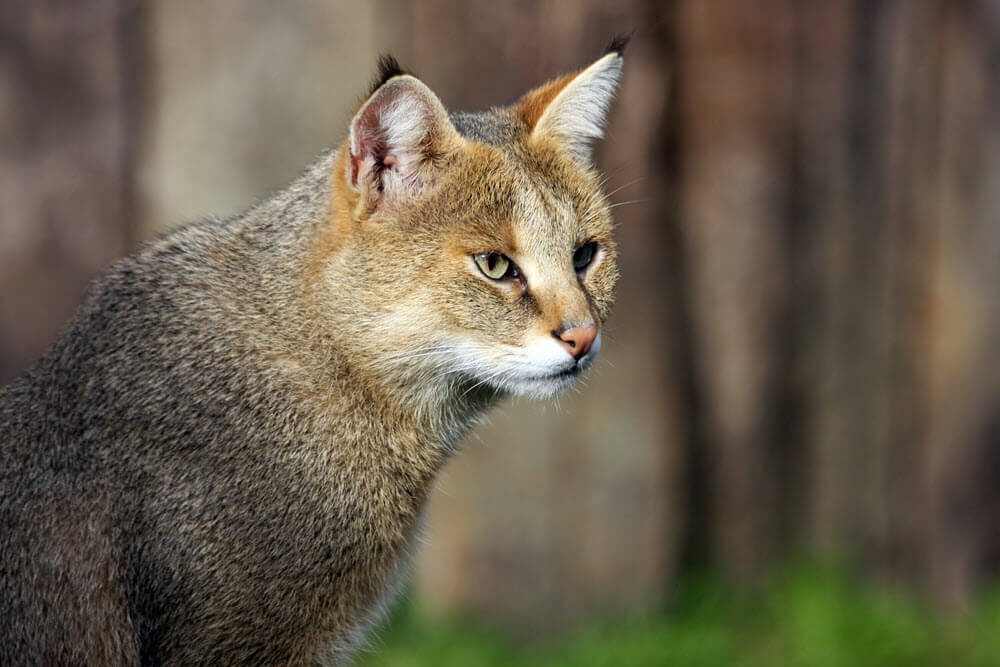

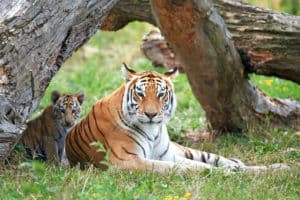
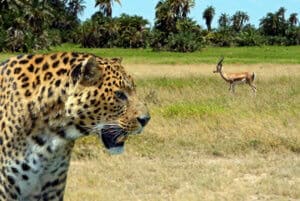

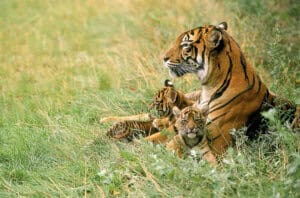

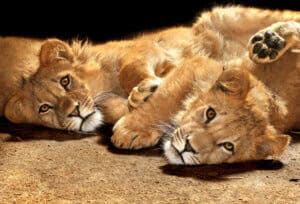
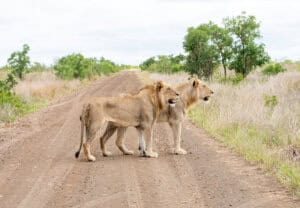
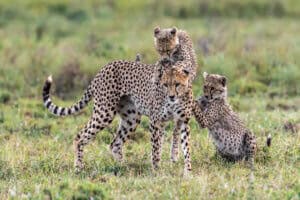


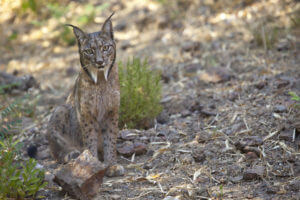




0 Comments